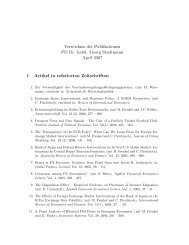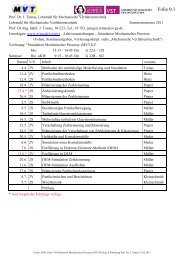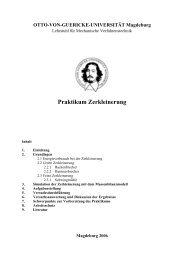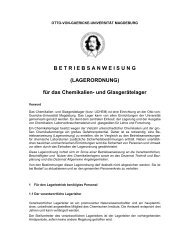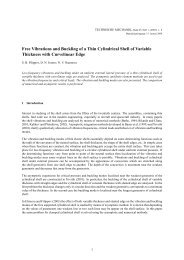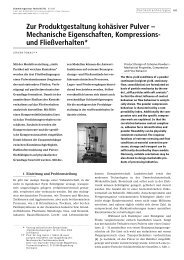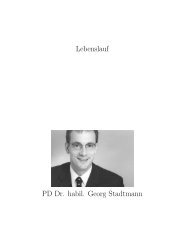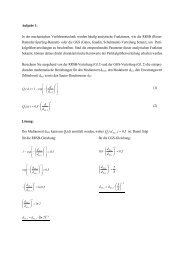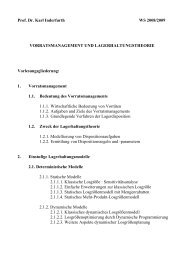Mechanics of nanoparticle adhesion â A continuum approach
Mechanics of nanoparticle adhesion â A continuum approach
Mechanics of nanoparticle adhesion â A continuum approach
You also want an ePaper? Increase the reach of your titles
YUMPU automatically turns print PDFs into web optimized ePapers that Google loves.
18J. TomasAdditionally, the rate-dependent, perfect viscoplastic deformation (at the point<strong>of</strong> yielding) expressed by contact viscosity η K times indentation rate h Kis assumedto be equivalent to yield strength p f multiplied by indentation height incrementh Kp ⋅ h = η ⋅h (35)f K K Kand one obtains again a linear model regarding strain rate:F = η ⋅ A = π ⋅d ⋅η⋅h(36)Nvis , K K 12 , K KAn attractive viscous force is observed, e.g., for capillary numbersCa = η ⋅ h / σ > 1 when comparatively strong bonds <strong>of</strong> (low-viscous) liquidK K lgbridges are extended with negative velocity –h [71–73].KConsequently, the particle material parameters: contact micro-yield strength p fand viscosity η K are measures <strong>of</strong> irreversible particle contact stiffness or s<strong>of</strong>tness.Both plastic and viscous contact yield effects were intensified by mobile adsorptionlayers on the surfaces. The sum <strong>of</strong> deformation increments results in the energydissipation. For larger particle contact areas A K , the conventional linear elasticand constant plastic behavior is expected.Now, what are the consequences <strong>of</strong> small contact flattening with respect to avarying, i.e., load or pre-history-dependent <strong>adhesion</strong>?2.2. Particle contact consolidation by varying <strong>adhesion</strong> forceKrupp [49] and Sperling [48, 56] developed a model for the increase <strong>of</strong> <strong>adhesion</strong>force F H (index H) <strong>of</strong> the contact. This considerable effect is called here as “consolidation”and is expressed as the sum <strong>of</strong> <strong>adhesion</strong> force F H0 according to Eq.(17) plus an attractive/repulsive force contribution due to irreversible plastic flattening<strong>of</strong> the spheres (p f is the repulsive “microhardness” or micro-yield strength<strong>of</strong> the s<strong>of</strong>ter contact material <strong>of</strong> the two particles, σ ss /a 0 is the attractive contactpressure, index ss represents solid–vacuum–solid interaction): 2⋅σFH = 4⋅π⋅r 12 ,⋅σss⋅ 1+ a ⋅ pss0 f(37)Dahneke [52] modified this <strong>adhesion</strong> model by the van der Waals force withoutany contact deformation F H0 plus an attractive van der Waals pressure (force perunit surface) p VdW contribution due to partially increasing flattening <strong>of</strong> the sphereswhich form a circular contact area A K (C H is the Hamaker constant based on interactingmolecule pair additivity [69, 75]):



